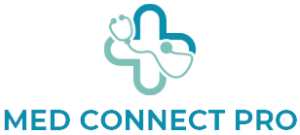As Framer enters 2025, it continues to evolve far beyond a simple prototyping tool. From AI-driven layout generation to built-in analytics, these main options in 2025 listed on Framer empower designers to build, test, and deploy web experiences seamlessly—all within one platform.
Wireframer: AI‑Powered Layout Generation
One standout option in Framer 2025 is Wireframer, an AI‑powered layout generator that eliminates the blank‑canvas struggle. Users type prompts like “two‑column layout with hero and signup,” and within seconds Framer produces a responsive wireframe complete with structured sections and mock content
This Framer option supercharges the ideation process, letting creators iterate rapidly and focus on design refinement rather than initial layout.
Workshop: AI‑Built Interactive Components
Another compelling option in Framer 2025 is Workshop, the new AI assistant for component creation. Describe interactive elements—such as a 3D tilt image card or a responsive carousel—and Framer’s Workshop generates functional code components complete with editable properties
This Framer option lets non‑coders build dynamic interactive elements quickly, bridging the gap between designing and coding.
Advanced Vector Editing & Animated Strokes
The rebuilt vector editor is a major Framer option for designers needing advanced visuals. Now available directly on canvas are drawing tools, vector sets, and stroke animations, enabling sleek icons, animated logos, and illustration micro‑interactions without exporting to external apps
This Framer option effectively replaces the need for separate tools like Illustrator for many workflows.
Native Analytics: Funnels & A/B Testing
In 2025, Framer adds serious analytics to its core options. Designers can now set up tracking IDs, conversion funnels, and run A/B tests—all within Framer—to monitor user flows, test variants, and optimize performance without third‑party services
This Framer option closes the loop between design and data, allowing informed decisions based on actual user behavior.
Workspace Enhancements & Collaboration Tools
Another important Framer 2025 option is enhanced workspace collaboration. With updated team plans, shared libraries, real‑time collaboration, and version control, Framer has doubled down on supporting design teams
This Framer option ensures consistency across projects and streamlines workflow by keeping everyone in sync through shared assets and simultaneous editing.
Responsive Typography & Layout Tools
Framer’s 2025 lineup offers enhanced layout controls, including support for REM units, improved zooming, and refined stack shortcuts for responsive design . These Framer options make it easier to fine‑tune designs across devices, giving precision with spacing, typography, and interactive layout elements.
Plugin Ecosystem & Third‑Party Integrations
Framer’s option ecosystem in 2025 is richer than ever. Plugins like Grit UI, Rive animations, Google Sheets data sync, Notion CMS integration, and more supercharge Framer workflows
These plugins emphasize Framer’s open‑ended flexibility—integrating external tools for enhanced productivity, content, and visuals.
CMS, SEO & Accessibility Features
One of Framer’s 2025 main options is its CMS and SEO support. Framer includes CMS collections, filters, dynamic content, sitemap and metadata controls, alt‑text prompts, tab order adjustments, and contrast‑ratio tools
This Framer option helps create performant, accessible, and search engine–optimized websites right within the platform.
Future‑Forward Immersive & Voice‑First Options
Framer continues to align with forward trends by enabling integrations for VR/AR, 3D prototyping, voice‑activated content, and accessibility/enhancement features . These Framer options reflect a forward‑thinking vision, allowing creators to experiment with cutting‑edge interactions directly in their design ecosystem.
Performance, Color Support & Workflow Efficiency
Performance and efficiency remain core Framer options for 2025. Updates include viewport performance boosts, display‑P3 support for richer color, faster component loading, locale‑redirect improvements, layout‑tool upgrades, and improved speed throughout the canvas
These Framer options enhance both the user and creator experience—making design smooth and efficient.
What Makes These Framer Options So Powerful?
End‑to‑end workflow: From ideation to analytics, Framer options cover every part of the design lifecycle in one environment.
AI‑driven automation: Wireframer and Workshop reduce manual work, letting designers focus on creativity and iteration.
Native analytics: Built‑in tracking lets Framer options close the design‑optimization feedback loop without leaving the platform.
Visual and interactive depth: Built‑in vector animation, CMS, plugins, and accessibility options elevate Framer beyond basic site building.
Final Thoughts: Why These Options Matter in 2025
The main options available in Framer throughout 2025 signal a radical shift. This is no longer merely a prototyping tool; it’s a comprehensive design-to-launch platform. With AI‑powered wireframes and components, integrated analytics, enhanced vector tools, improved collaboration, and an expanding plugin ecosystem, Framer empowers designers to execute full digital projects with unmatched speed and sophistication.
If you’re exploring the main options in Framer for 2025, dive into Wireframer and Workshop, test your designs with funnels and A/B tools, enrich them with visual animations, and leverage the plugin ecosystem. By harnessing these Framer options, you’ll design smarter, build faster, and deliver better-performing web experiences right from within a single platform.
